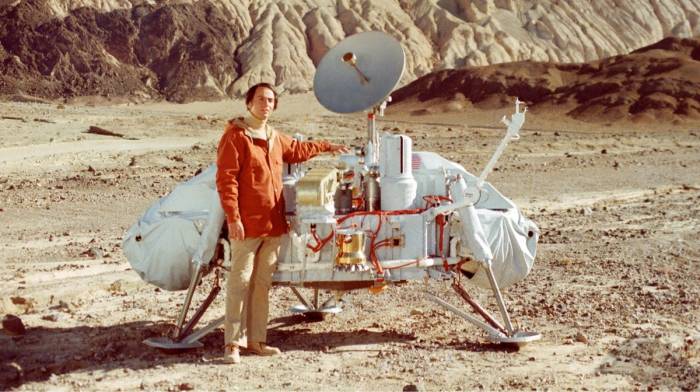Fritz Kahn, The Father of Infographics
Using images and metaphors, this man was able to take the inner workings of the human body to wide audiences.
An amateur astronomer, scientific doctor by trade, gynaecologist by profession, artist, writer, educator and humanist, Fritz Kahn possessed one of the most refined imaginations known to man. He is best known for his mechanical-visceral poster from 1926 Man as an Industrial Palace. Kahn’s legacy was an efficient and poetic way of understanding science, especially anatomy, using unlikely metaphors that drew audiences closer to complex and at times alienating concepts surrounding life. His influence can be found in modern visual information, especially in the popular infographic format, which we use to make sense of the world.

The Taschen publishing house has captured the work of Kahn’s life in the book Fritz Kahn; a huge monographic volume in English, French and German, which gathers and contextualizes influential images, his essays and, above all, pays homage to a vast imagination that refused to be limited to a single discipline and in turn, built fabulous bridges between different ones. Kahn was a brilliant scientific proponent who sought to grasp the public’s curiosity by popularizing science. He used infographics in the same way Carl Sagan used narrative: he subverted the medium to deliver his message.

Kahn understood that visualization is a powerful tool that can shine a light on internal processes we do not comprehend, and he understood that the best way of doing this was by using metaphors to make an abstract concept clear. A beautiful example of this can be found in the 1924 edition of the Kosmos journal, in Travel experiences of a wandering cell: the villi currents of the intestinal tract. This image explains the circulation of villi using visual metaphors, so that whoever reads it can travel on a cell and have an unforgettable adventure.
‘What a drama, but alas, only a drama!” The microscope’s field of vision is narrowly limited and we see the blood cells arriving on one side and disappearing again on the other… where from? where to? — we don’t know […]. The researcher stops at the rigid circle of his microscope’s field of vision, but we, we are poets, and who will forbid the imagination to travel to magical realms over lands and overseas like the child with the seven swans? […] Like the hero of the “last fairy-tale” we become smaller and smaller until at last we stand microscopically tiny, mini-Lilliputians on the bank of the vein-stream, and see the cells drifting past us, as big as the barques [large sailing ships] of men. We climb up one of the cliffs that loom into the stream, and wait. Cell after cell swims past, but quick and in the middle of the stream, unattainable to our desires. At last, however, a cell-boat drifts close to us on the beach, settles askew like a ship run aground, we leap across and into it, now it tilts from side to side, we push off and sail away. We are sailing! In our cell-boat on the red-gold stream of blood! Farewell, realm of man! We are in the land of fairy-tales, the fairy-tale land of truth, above which you rough giants gap blithely away on your great feet, and we sail towards miracles, true miracles!


Related Articles
7 Recommendations for Organizing Your Library
For the true bibliophile, few things are more important than finding a book from within your library.
Red tea, the best antioxidant beverage on earth
Red tea is considered to be the most unusual of teas because it implies a consistently different preparation process. ––It is believed that its finding came upon surprisingly when traditional green
A brief and fascinating tour of the world's sands
To see a World in a Grain of Sand And a Heaven in a Wild Flower, Hold Infinity in the palm of your hand And Eternity in an hour. - William Blake What are we standing on? The ground beneath our feet
Strengthen your memory with rosemary oil
For thousands of years rosemary oil has been traditionally admired and used due to its many properties. In the Roman culture, for example, it was used for several purposes, among them cleansing, as
Literature as a Tool to Build Realities
Alain de Botton argues that great writers are like lenses through which we can see an infinite array of possibilities.
Mandelbrot and Fractals: Different Ways of Perceiving Space
Mathematics has always placed a greater emphasis on algebra, a “purer” version of itself, one that is more rational at least. Perhaps like in philosophy, the use of a large number knotted concepts in
Luis Buñuel’s Perfect Dry Martini
The drums of Calanda accompanied Luis Buñuel throughout his life. In his invaluable memoirs, published under the Buñuel-esque title, My Last Sigh, an entire chapter is dedicated to describing a
A Brief Manual of Skepticism, Courtesy of Carl Sagan
Whether or not you’re dedicated to science, these tips to identify fallacies apply to any form of rigorous thinking.
How to Evolve from Sadness
Rainer Maria Rilke explored the possible transformations that sadness can trigger in human beings.
Alan Watts, A Discreet And Charming Philosopher Of The Spirit
British thinker Alan Watts was one of the most accessible and entertaining Western interpreters of Oriental philosophy there have been.










